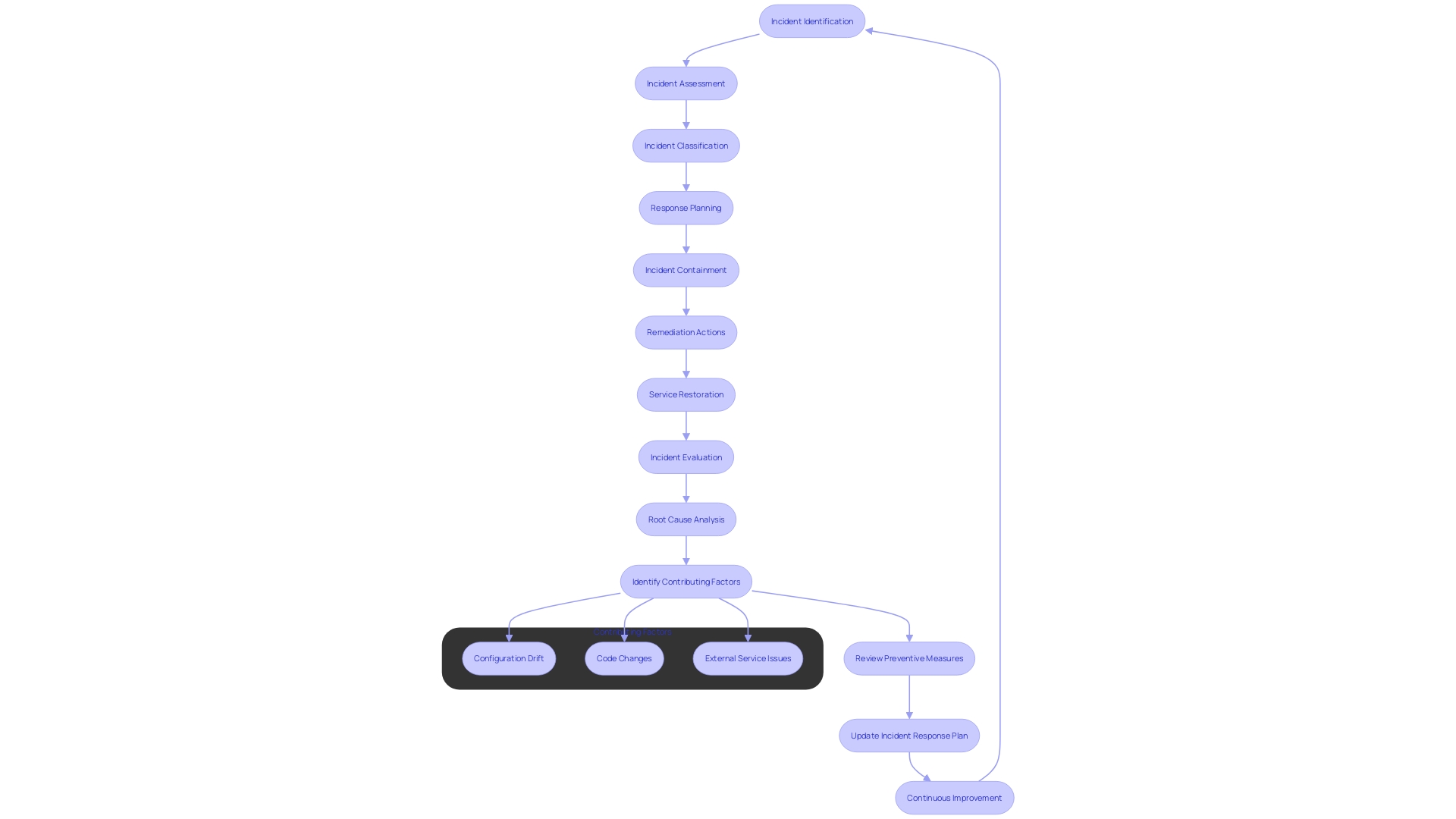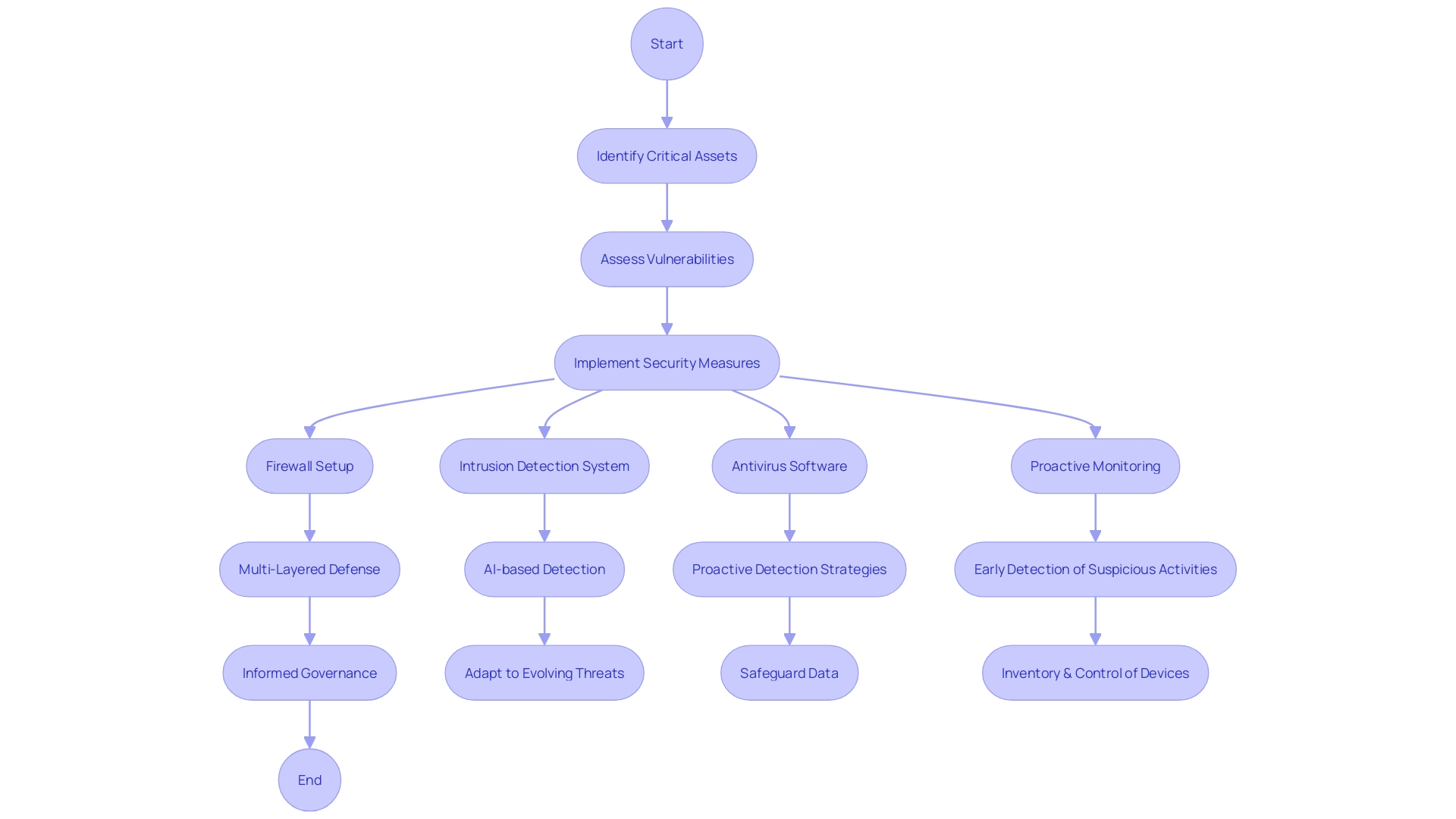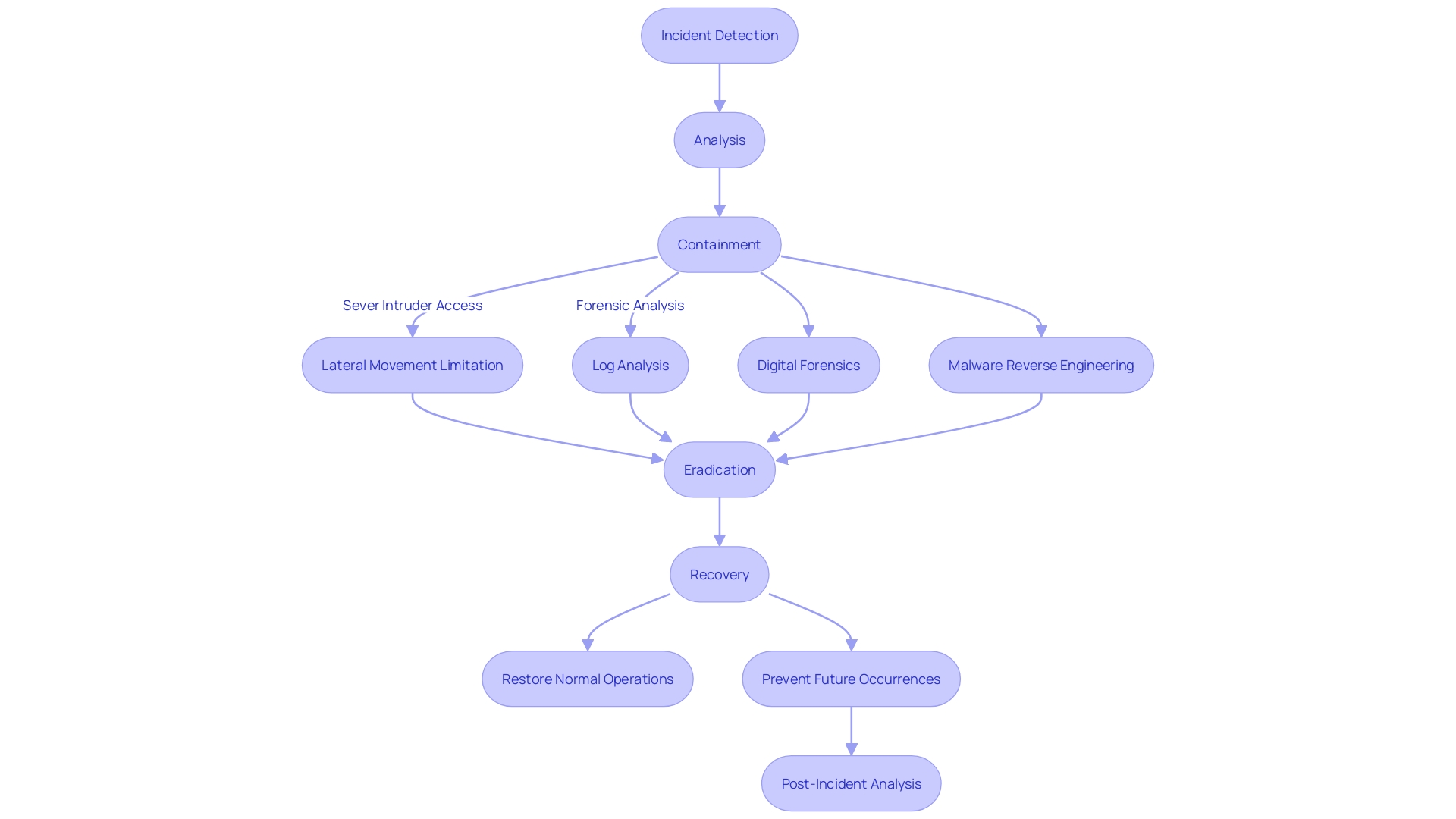Introduction
Constructing an incident response plan is a multifaceted endeavor requiring attention to detail and strategic planning. It involves identifying potential cybersecurity threats and vulnerabilities through a comprehensive risk assessment, prioritizing response efforts, and forming a dedicated incident response team. Effective communication during a cybersecurity incident is crucial, as demonstrated by real-world cases where immediate, transparent collaboration with cybersecurity experts helped contain and mitigate threats.
With the increasing frequency of cyberattacks and the high cost of breaches, it's clear that an incident response plan is not a static document but a dynamic set of protocols that must be regularly tested and updated. By integrating case studies, statistics, and expert insights, organizations can enhance their ability to navigate the complexities of cybersecurity threats and handle incidents with speed and precision. In this article, we will explore the key steps involved in incident response planning and highlight the importance of a proactive and informed approach to cybersecurity.
Step 1: Preparation
Constructing an incident response plan is a multifaceted endeavor requiring attention to detail and strategic planning. Identifying potential cybersecurity threats and vulnerabilities through a comprehensive risk assessment is a foundational step in this process. This proactive approach enables an organization to prioritize its response, directing resources where they are most needed.
The real-world implications of this were demonstrated in a case where an AWS account was compromised due to a suspicious support case request. The incident, involving a request to increase email service sending limits by an unauthorized user, highlights the necessity of vigilance in monitoring for unusual activity.
In response to such incidents, the formation of a dedicated incident response team is paramount. This team should bring together diverse expertise from IT to legal and communications to manage the response effectively. The significance of defined roles and responsibilities was exemplified by MITRE's experience, where understanding hacker behavior informed their response strategy and led to the creation of MITRE ATTACK®, a framework for cataloging adversary tactics and techniques.
Communication during a cybersecurity incident is critical. A well-structured plan should detail the channels for internal and external information dissemination, ensuring stakeholders are kept informed. The case of Born's data breach exemplifies how immediate, transparent communication and collaboration with cybersecurity experts can help contain and mitigate threats, reinforcing the trust in a response plan's efficacy.
With the increasing frequency of cyberattacks across various industries—and the healthcare sector enduring the highest average cost per breach, nearly $11 million—it's clear that an incident response plan is not a static document but a dynamic set of protocols that must be regularly tested and updated.
Real-world events serve as a reminder that incident response is not a mere theoretical exercise but a crucial part of an organization's resilience. The integration of case studies, statistics, and expert insights into incident response planning can transform an organization's ability to navigate the complexities of cybersecurity threats, ensuring they are well-equipped to handle incidents with speed and precision.

Step 2: Detection and Analysis
Advancing into the realm of detection and analysis, it is essential for organizations to fortify their cybersecurity posture with robust security measures. Firewalls, intrusion detection systems, and antivirus software form the bedrock of a secure environment by thwarting unauthorized access and identifying potential threats. Embracing a proactive stance, the Savannah-Chatham County Public School System (SCCPSS), despite budgetary constraints, exemplifies commitment to safeguarding data.
Carl Eller, overseeing their cybersecurity, underscores the necessity of vigilant monitoring to safeguard student and staff data against misuse.
In tandem, United Airlines showcases the complexity of protecting extensive networks. With operational technology devices across multiple hubs, the stakes are high for maintaining security. The airline's principal architect, Chris Peters, with his extensive cybersecurity experience, understands the imperative of having a clear inventory and control over all devices within the network.
Both SCCPSS and United Airlines demonstrate that continuous monitoring tools are indispensable. Early detection of suspicious activities, such as those prevented by solutions like Abnormal, which operates autonomously, is key in curtailing the progression of cyber threats. With alarming statistics like the ninety-five billion events analyzed in the first half of 2023, where AI-based detection played a pivotal role in identifying and analyzing potential risks, it's clear that vigilance is not optional.
Moreover, the emergence of sophisticated spyware tools, such as Insane, which can bypass traditional security measures, accentuates the need for proactive and advanced detection strategies. As the cyber landscape evolves, organizations must adapt to these challenges with agility and an informed outlook, as underscored by Mike Britton's insights on the necessity of securing email environments in this fast-paced technological era.
In conclusion, it is paramount for organizations to not only implement but also actively manage their security infrastructure. As Cisco Talos Incident Response engagements reveal, passive security is often insufficient when faced with determined adversaries. A multi-layered defense strategy is essential, involving not just technology but also informed governance and preparedness to adapt to the ever-changing cyber threat landscape.

Step 3: Containment, Eradication, and Recovery
When responding to a cybersecurity incident, three critical steps must be taken: containment, eradication, and recovery. Containment is about swiftly isolating affected systems to halt the spread of the threat, which may require cutting off network access or disconnecting compromised devices. It's essential to act quickly, as seen in the case of Walter Smith, a seasoned Data Engineer at NKSA, who became a target due to his access to sensitive data, highlighting the need for rapid containment to mitigate risk.
Following containment, eradication is the process of eliminating the threat. This step involves purging malicious software and closing unauthorized access points. The comprehensive collaboration between Microsoft and PwC exemplifies this approach, combining technical expertise with risk management strategies to address the full spectrum of an incident.
Finally, recovery is about restoring systems and data to their original state, which might include retrieving data from backups and ensuring the integrity and functionality of the systems. According to CISA, building resilience in cyberspace requires a concerted effort to understand, manage, and reduce risk, emphasizing the importance of a robust recovery plan. Moreover, as MITRE's experience indicates, learning from incidents can significantly improve security postures and strategies, underscoring the value of a meticulous recovery process that incorporates lessons learned.

Step 4: Post-Incident Activities
Following the containment, eradication, and recovery processes of a cybersecurity incident, it is imperative to engage in comprehensive post-incident activities. A meticulous post-incident review should be conducted to scrutinize the response process, highlighting areas that require enhancement and chronicling key takeaways. The insights gathered from this review are instrumental in refining the incident response (IR) plan, thus bolstering the efficacy of future responses.
Regular updates to the plan are essential to maintain alignment with the dynamic cyber threat environment and the bespoke needs of the organization. An illustrative case study demonstrated the use of AI to generate suggested summaries during incidents, which highlighted the importance of human oversight. The review process also benefits from incorporating feedback on the Ai's performance, ensuring that technology serves as an auxiliary tool rather than an autonomous agent.
Moreover, the evolving landscape of cybersecurity and the proliferation of cyber reporting regulations underscore the significance of an adaptive IR plan. A recent cyber incident at the International Criminal Court, which necessitated a collaborative response and ongoing analysis, exemplifies the necessity for preparedness and a robust IR framework. These events align with the recommendations of the Cyber Incident Reporting Council, which advocates for streamlined reporting requirements to enhance the industry's response to cyber threats.
In light of these developments, it is clear that an Incident Response Plan is not merely a static document but a living framework that requires iterative refinement. This approach is validated by historical patterns, as the initial ad hoc and reactive responses to breaches have given way to structured methodologies. The rise of Computer Emergency Response Teams (Certs) in the 1980s marked a pivotal evolution in incident response, paving the way for today's sophisticated IR strategies.
By integrating these learnings and leveraging feedback mechanisms, organizations can not only fine-tune their IR plans but also justify necessary modifications. This continuous improvement cycle is supported by statistics indicating that CISOs emphasize the importance of practical, interactive exercises to educate senior leadership on security's role in incident management. Such exercises can provide valuable insight into the real-world application of IR plans and the significance of an informed and responsive leadership in the face of security breaches.

Conclusion
Constructing an incident response plan involves strategic planning, forming a dedicated team, and effective communication. With the increasing frequency of cyberattacks, it's crucial to regularly test and update the plan by integrating case studies, statistics, and expert insights.
Fortifying cybersecurity posture with robust security measures like firewalls and antivirus software is essential. Early detection of suspicious activities and an informed outlook are key in curtailing cyber threats.
Swift containment, eradication, and recovery are critical steps when responding to a cybersecurity incident. Learning from incidents improves security strategies and postures.
Comprehensive post-incident activities, including a meticulous review of the response process, refine the incident response plan and ensure alignment with the dynamic cyber threat environment. Regular updates are crucial to maintain efficacy.
In conclusion, an incident response plan is a living framework that requires continuous refinement. By integrating historical learnings and conducting practical exercises to educate leadership, organizations can improve their incident response plans and respond effectively to security breaches.




